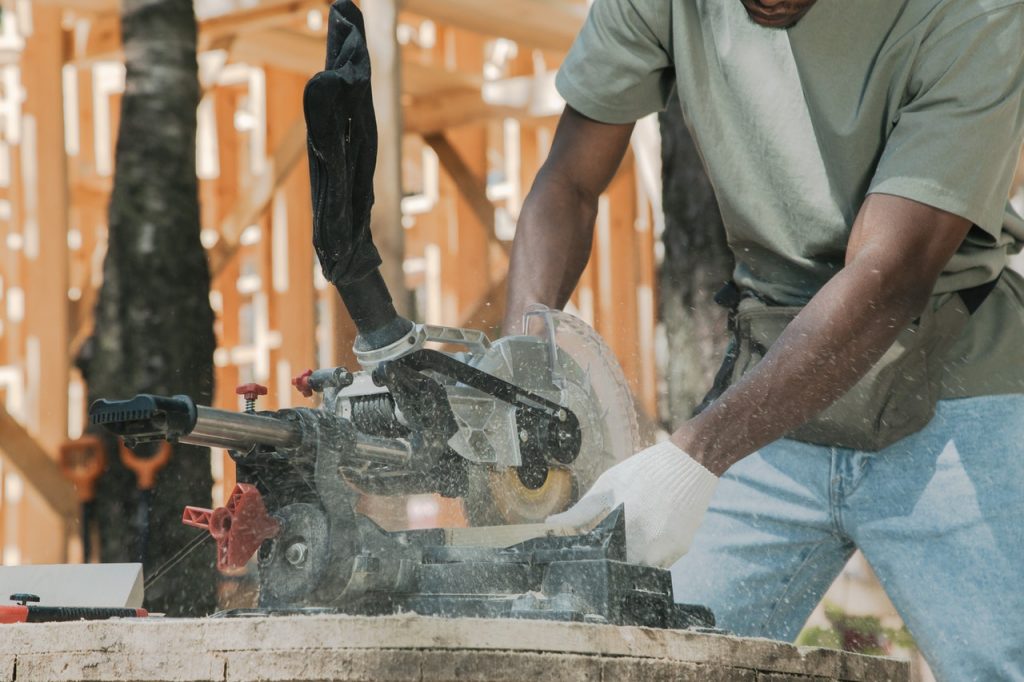Circular saws are one of the most important tools for a carpentry job. One of its main advantages is its ability to cut at different widths and depths.
However, it can be a bit tricky to adjust the depth of a circular saw. There are certain parts of the saw you have to adjust.
To help you, we have prepared this guide.
Quick Summary
In this guide, we will take a look at:
- How to adjust the depth of your circular saw
- Types of circular saw blades available in the market
- How you can make a clean cut with a circular saw
Let’s go through it.
How to Adjust the Depth of a Circular Saw?
As discussed earlier, circular saws are one of the most versatile tools in your inventory. You can cut numerous types of woods with circular saws. They also have more utility when compared to miter saws or table saws as they can handle different types of blades.
To make a clean cut, you have to set your circular saw at the correct depth. It makes the job easier and also increases safety when you operate it.
Most circular saws have a similar design, hence the process to adjust the depth is similar. To adjust the depth, you need to:
- Determine the depth of the cut. You can do this by holding your saw with the board. Make sure that the saw is unplugged and the blade guard is retracted.
- Locate the adjustment lever. It is usually at the side of the back handle. You can turn this lever and freely adjust your circular saw.
After you have located the lever, you can then adjust the saw according to the wood piece. There are two methods to adjust the blade correctly:
- Set the depth till the blades just stick out of the wood. This approach can cause you issues as the saw may not fully cut at certain points.
- The other approach is to set the depth so that the blade extends not more than ¼ inches below the workpiece.
After this, you can make the cut. Be sure that the piece has been secured properly. Then rev your saw to its maximum speed and make the cut.
How to Make a Clean Cut With a Circular Saw?

Circular saws can make a variety of cuts. You can make angled cuts as well as straight cuts. However, to make a safe and clean-cut, you need to consider some technical factors. Let’s take a look at these:
- Make sure that you don’t set the blade too deep. The blade is more exposed, which can be a safety hazard as well as lead to more chances of kickback.
- To avoid binding, make sure that the workpiece can easily move or fall away. In any case, it is safe not to restrict or hold the cutoff piece.
- Before you make rip cuts, make sure that the board has been properly secured. You can use clamps for this purpose. If your wood is very wide, you can also use nails or tacks to keep it in place.
- Before you make the cut, we recommend that you mark the line where you want to make the cut. This way, you can see where you make the cut and can guide the saw.
- If your saw deviates from the line, you need to redo the cut. Do not attempt to steer the saw back toward the line. Let it stop completely and then start the cut from the edge.
- Set the depth of your saw before you make the cut. Otherwise, you risk overexposing your saw blade.
- Use the proper types of saw blades for your projects. There are different kinds of blades which you can use. Each has specific characteristics suited to the situation.
It is not necessary that you will make a clean, problem-free cut your first time. Circular saws require practice to operate, hence the perfect cut will be possible only after you have operated the saw for some time. But, you can follow these tips to accelerate your learning process.
Find more resource guides for your favorite tools HERE.
Types of Circular Saw Blades
Circular saws are highly adaptable power tools. They are portable, which gives them the edge over other kinds of saws such as miter saws and table saws. As such, they can also be used for cutting different types of materials.
But, you will need different types of blades for different surfaces and materials. Let’s take a look at some of the different ones that are available in the market:
Rip cuts
If you want to cut your wood along the fibers, then you would need a rip cut blade. These blades have a lower number of teeth. Normally, they have less than 30 teeth. The gullet is also deeper, so you will get a fast but rough cut. Rip cut blades also have a thicker kerf size.
Crosscuts
These kinds of cuts are made on the width of the workpiece. Normally, this cut is made parallel to the fibers of your wood. The blades also have a high number of teeth on them. Unlike a rip-cut blade, these have a thinner kerf size and a shallower gullet.
But, you will get a cleaner result because of the above-mentioned features.
For Metal cutting
Metal cuts require specialized blades as metals are harder than other materials. These blades cut both iron and non iron metals. A blade for this job has no teeth and features expansion slots for heat management.
Blades for Masonry jobs
These types of blades work differently from other types of blades. Masonry blades slice away the material rather than cut through it.
A blade for masonry cuts does not have any teeth. Most are made of specialized fiberglass-reinforced silicon carbide to cut cleanly.
Combination Blades
These are the middle ground between a cross cut blade and a rip cut blade. These are also known as general purpose blades. Normally, such blades have between 30 and 60 teeth. You can get these blades for a quick and easy cut on your wood.
Blades for Plastics
Plastics can get tough to work with. You have to be careful that they don’t melt, and that the edges are smooth. Luckily, specialized blades are easy to procure from the market. These types of blades usually have a high number of teeth. The teeth are also small and kerf size is thin.
Wrapping Things Up…
Circular saws can be used for a variety of jobs. You can also use them on different materials as well as at different angles.
However, you need to properly adjust the settings such as the depth of your saw before you operate it.
You can easily set the depth of your saw by following this guide step by step. With this, we reach the end of our article on “How to Adjust Circular Saw Depth?”.
Let us know of your experience in the comments.
For more information, CLICK HERE.

